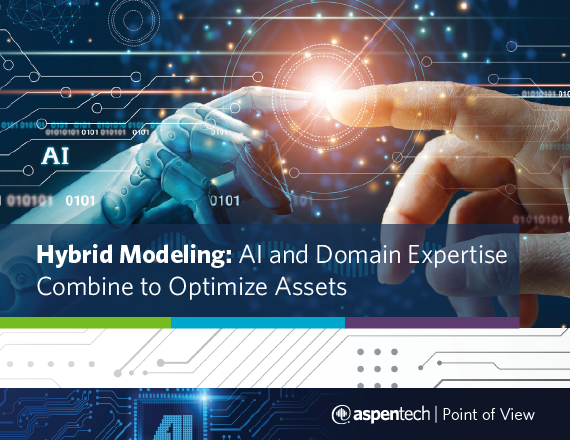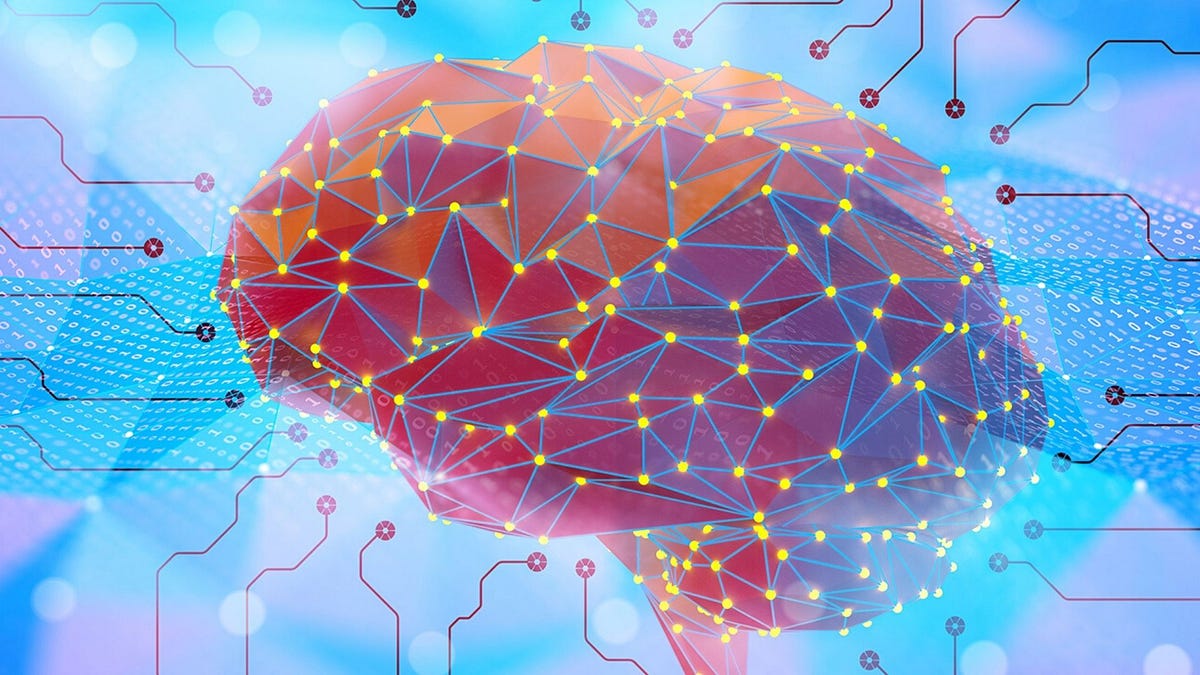The Intersection of Symbolic AI and Cognitive Science: Advancing Human-Like Intelligence
Imagine if artificial intelligence could think and reason like humans. That’s the goal of symbolic AI, also known as classical AI, through its fascinating integration with cognitive science.
Picture a computer program that solves problems not by crunching numbers, but by manipulating symbols and following logical rules—much like how our minds process information. This approach represents a fundamental shift in how we understand and develop artificial intelligence systems.
Symbolic AI shares a deep connection with cognitive science, which studies how the human mind works. By incorporating insights from psychology, linguistics, and neuroscience, symbolic AI systems aim to replicate human-like reasoning through structured representations of knowledge and logical problem-solving steps.
For example, when a doctor diagnoses a patient, they don’t just pattern-match symptoms—they apply medical knowledge, reason through possibilities, and draw logical conclusions. Symbolic AI systems attempt to mirror this cognitive process, using high-level representations to analyze situations and make informed decisions.
This article explores how symbolic AI processes information, examines its integration with cognitive science principles, and discovers its real-world applications. Whether you’re new to AI or already fascinated by how machines can think, you’ll gain valuable insights into this groundbreaking field that bridges artificial and human intelligence.
Historical Context and Evolution of Symbolic AI
The 1956 Dartmouth Conference marked a pivotal moment in artificial intelligence history. Pioneers like John McCarthy and Marvin Minsky established symbolic AI as the dominant paradigm. This approach, emphasizing human-readable symbols and logical rules, would shape AI research for decades. Early breakthroughs like the Logic Theorist, developed by Allen Newell and Herbert Simon, demonstrated computers could perform logical reasoning by manipulating symbols.
During the 1960s and early 1970s, symbolic AI experienced significant growth with the development of expert systems—programs designed to emulate human decision-making through explicit rules. One of the pioneers of this approach was DENDRAL, created at Stanford, which helped chemists identify molecular structures. Following that, MYCIN demonstrated how symbolic AI could assist in medical diagnosis using logical deduction chains. However, the field faced its first major setback during the ‘AI Winter’ of the mid-1970s, as early promises of human-like reasoning proved to be more challenging than anticipated.
The limitations of purely rule-based systems became evident; they struggled with ambiguity, common-sense reasoning, and adapting to new situations without requiring explicit reprogramming. A renaissance in AI emerged in the 1980s with the introduction of more sophisticated knowledge representation techniques and inference engines. For example, companies like Digital Equipment Corporation successfully implemented XCON, an expert system that saved millions of dollars in configuring computer systems. However, maintaining and updating extensive rule bases became increasingly complex and costly.
By the 1990s, researchers in symbolic AI began to incorporate probabilistic methods and machine learning to address earlier limitations. This hybrid approach recognized that while logical reasoning was essential for certain tasks, statistical techniques could better manage uncertainty and learn from examples. Edward Feigenbaum, a pioneer of expert systems, summarized this transformation with the insight: “In the knowledge lies the power. That was the big idea. In my career, that is the huge ‘Ah ha!’ It wasn’t the way AI was being done previously.”
Today, symbolic AI techniques complement modern deep learning approaches, especially in applications that require explainable reasoning or formal verification. While neural networks excel in pattern recognition, symbolic methods continue to provide the logical framework needed for complex decision-making and knowledge representation.
Key Theories and Principles in Symbolic AI
Symbolic AI operates like a sophisticated puzzle solver using human-readable symbols and logical rules. Just as we use language to express ideas, Symbolic AI uses formal languages to represent and process information.
Knowledge representation forms the foundation of Symbolic AI systems. Think of it as creating a detailed digital library where facts and relationships are stored in a way computers can understand and use. For example, we might represent the knowledge that ‘all birds have wings’ using logical statements that the system can then use to make conclusions about specific birds.
Predicate logic, one of the key tools in Symbolic AI, works like a mathematical version of human reasoning. Imagine writing a recipe—predicate logic helps the AI understand statements like ‘IF something is a cake AND it contains chocolate, THEN it is a chocolate cake.’ This structured approach allows AI systems to make reliable deductions based on the information they have.
Production rules serve as another vital component, acting as ‘if-then’ instructions that guide the AI’s decision-making process. These rules help the system respond to different situations, much like how a traffic light follows specific rules to manage traffic flow—if the light is red, then cars must stop.
The power of symbolic AI lies in its ability to reason step-by-step through problems, similar to how humans solve complex puzzles or make logical deductions.
Judea Pearl, author of “Probabilistic Reasoning in Intelligent Systems”
Symbolic AI employs various strategies to draw conclusions from its knowledge base. This process mirrors how humans might solve a mystery by gathering clues and making logical connections. The AI examines its stored information, applies relevant rules, and works through steps to reach conclusions or make decisions.
One major advantage of this approach is its transparency—unlike other forms of AI, symbolic systems can typically explain their reasoning process in a way that humans can follow and understand. This makes them particularly valuable in fields where decision-making needs to be clear and verifiable, such as medical diagnosis or legal reasoning.
| Component | Description |
|---|---|
| Knowledge Representation | Structured frameworks like semantic networks, frames, and ontologies used to model and categorize information. |
| Inference Engines | Systems that apply logical rules to the knowledge base to derive new information or make decisions. |
| Production Rules | IF-THEN statements that guide decision-making processes based on predefined conditions. |
| Search Algorithms | Techniques like breadth-first search, depth-first search, and A* used to navigate through solution spaces. |
| Expert Systems | Programs that emulate human decision-making by applying logical rules to specific domains, such as MYCIN for medical diagnosis. |
| Hybrid Models | Combining symbolic reasoning with neural networks to enhance interpretability and data efficiency. |
Applications of Symbolic AI in Cognitive Science
Symbolic AI serves as a foundational approach in cognitive science, helping researchers model and understand the intricate workings of human thought processes. Unlike neural networks that learn from patterns in data, symbolic AI systems use explicit rules and logical representations to emulate human-like reasoning.
In natural language processing, symbolic AI frameworks have proven particularly valuable for modeling how humans understand and generate language. These systems break down language into symbolic representations—words, phrases, and grammatical rules—that mirror how cognitive scientists believe our brains process linguistic information.
One significant application is in expert systems, where symbolic AI helps create computational models that replicate human decision-making processes. Recent research has shown that symbolic AI offers unique advantages for modeling expert knowledge and reasoning chains in ways that align closely with human cognitive processes.
The field also employs symbolic AI to study problem-solving behaviors. By representing problems and solution strategies as explicit symbolic structures, researchers can analyze how humans approach complex tasks and make decisions. This approach has been particularly useful in understanding how people develop and apply mental models when tackling new challenges.
Beyond individual applications, symbolic AI contributes to our fundamental understanding of cognition itself. By creating computational models that can be systematically tested and refined, researchers can develop and validate theories about human cognitive processes. This relationship between AI and cognitive science continues to advance our knowledge of human intelligence.
Symbolic AI’s greatest contribution to cognitive science may be its ability to make explicit the rules and representations that underlie human thought processes, allowing us to better understand how we think and reason.
Pascal Hitzler, Neuro-Symbolic AI Researcher
Through these applications, symbolic AI remains an essential tool in cognitive science, helping bridge the gap between computational models and human cognition. Its ability to represent knowledge explicitly and reason with symbols continues to provide valuable insights into the nature of human intelligence and thought processes.
Challenges and Limitations of Symbolic AI
Classical symbolic AI systems face several fundamental challenges that limit their real-world effectiveness. While these systems excel at processing well-defined rules and logical structures, they often struggle with the messy, uncertain nature of real-world data and decision-making. One of the most significant limitations is symbolic AI’s difficulty in handling uncertainty and ambiguity. Traditional rule-based systems require explicit programming of every possible scenario, making them brittle when encountering novel situations.
For example, while a symbolic AI system might excel at chess where rules are clearly defined, it would struggle with understanding natural language where context and implied meaning play crucial roles.
The challenge of knowledge acquisition, often called the “knowledge engineering bottleneck”, presents another major hurdle. Research has shown that manually encoding expert knowledge into rule-based systems is time-consuming, expensive, and often fails to capture the nuanced reasoning humans naturally employ.
Explainability and Safety engender trust. These require a model to exhibit consistency and reliability. To achieve these, it is necessary to use and analyze data and knowledge with statistical and symbolic AI methods relevant to the AI application; neither alone will do.
Building Trustworthy NeuroSymbolic AI Systems
Scaling presents a significant challenge in AI. As problems become more complex, the number of rules and relationships that need to be encoded increases exponentially. This growth makes it impractical to rely solely on symbolic approaches for large-scale applications like computer vision or speech recognition, where the patterns are too intricate to be defined manually.
To overcome these limitations, modern AI increasingly combines symbolic reasoning with statistical methods, especially machine learning. These hybrid systems take advantage of both paradigms: the interpretability and logical rigor of symbolic AI and the pattern recognition and adaptability of statistical approaches. For example, neuro-symbolic systems can learn patterns from data while also explaining their reasoning processes.
Despite these challenges, symbolic AI’s strength lies in its ability to provide clear logical reasoning and interpretable decisions. This is particularly valuable in fields that require explicit reasoning chains and verifiable decision-making processes. The future of AI lies not in abandoning symbolic approaches but in discovering innovative ways to integrate them with other AI methodologies.
| Criteria | Symbolic AI | Hybrid AI |
|---|---|---|
| Interpretability | High | Moderate to High |
| Data Efficiency | Low | High |
| Handling Uncertainty | Poor | Good |
| Scalability | Low | High |
| Explainability | High | Moderate to High |
| Learning Capability | Low | High |
| Adaptability | Low | High |
Hybrid Approaches: Combining Symbolic and Neural AI


Hybrid models that unite symbolic reasoning with neural networks represent a significant breakthrough in artificial intelligence. By merging the logical precision of symbolic AI with the pattern-recognition capabilities of neural networks, these systems are transforming how machines learn and reason.
One of the most compelling advantages of hybrid approaches is their enhanced interpretability. Unlike pure neural networks that often function as “black boxes,” hybrid systems maintain transparency in their decision-making process through their symbolic components. This transparency is crucial for applications in sensitive domains like healthcare and autonomous vehicles where understanding AI decisions is paramount.
A particularly promising aspect of hybrid models is their improved data efficiency. These approaches demonstrate how integrating symbolic reasoning with neural networks can create more robust and capable AI systems. By leveraging pre-existing symbolic knowledge, these models can learn effectively from smaller datasets – a crucial advantage in real-world applications where labeled data is often scarce.
The robustness of hybrid systems stems from their ability to combine the best of both worlds. While neural networks excel at handling uncertain and noisy data, symbolic reasoning provides a structured framework for applying logical rules and constraints. This combination results in systems that are more resilient to adversarial attacks and better at generalizing from limited examples.
Beyond technical capabilities, hybrid approaches are showing promise in bridging the gap between human and machine intelligence. By incorporating symbolic reasoning that mirrors human logical thinking with the adaptive learning capabilities of neural networks, these systems can potentially achieve more natural and intuitive interactions with human users.
By bridging the gap between human and machine intelligence, neuro-symbolic AI has the potential to create intelligent systems that can reason, learn, and adapt in complex and uncertain environments.
Jim Santana, Medium
Leveraging SmythOS for Symbolic AI Development
Symbolic AI development requires sophisticated tools for handling complex reasoning systems with transparency and efficiency. SmythOS emerges as a groundbreaking platform addressing these challenges with its intuitive visual design environment and comprehensive debugging capabilities.
At the core of SmythOS is its visual workflow builder, transforming the traditionally code-heavy process of creating symbolic AI systems into an accessible drag-and-drop experience. This democratizes AI development, allowing domain experts to translate their knowledge directly into functional symbolic reasoning systems without complex programming.
The platform’s built-in debugging tools represent significant advancement. Unlike traditional black box
AI systems, SmythOS provides clear visibility into AI decision-making, enabling developers to track logical flows and identify potential issues in real-time. This transparency is crucial for maintaining reliable and explainable AI systems.
SmythOS’s support for hybrid approaches sets it apart. Industry research highlights that hybrid AI systems can significantly improve model efficiency by combining strengths of different AI approaches. SmythOS integrates symbolic reasoning with other AI paradigms, allowing developers to create more robust and versatile solutions.
Beyond basic development features, SmythOS’s enterprise-grade capabilities extend with flexible deployment options and scalable architecture. Organizations can move from prototype to production confidently, whether implementing AI agents as API endpoints or custom plugins. The platform ensures smooth integration with existing systems.
We’re likely to see even more sophisticated combinations of AI models, perhaps integrating quantum computing or neuromorphic technologies.
Dr. Bernard Marr, AI and Technology Expert
For AI developers building sophisticated symbolic reasoning systems, SmythOS offers a comprehensive suite of tools that streamline development while maintaining the precision and logic-based approach symbolic AI demands. Its combination of visual design tools, debugging capabilities, and support for hybrid approaches makes it invaluable in the evolving AI development landscape.
Conclusion: The Future of Symbolic AI and Cognitive Science


Hybrid AI approaches embodied in a stylized brain. – Via smythos.com
The convergence of symbolic AI and cognitive science represents a pivotal shift in artificial intelligence development. By combining rule-based reasoning with insights from human cognition, researchers and developers are forging new paths toward more robust and interpretable AI systems. This fusion addresses long-standing challenges in AI, particularly around explainability and human-like reasoning.
Modern platforms like SmythOS demonstrate this evolution by integrating symbolic reasoning capabilities with neural approaches, enabling AI systems that can both learn from data and follow explicit logical rules. This hybrid approach enhances the transparency of AI decision-making while maintaining the adaptability that modern applications demand.
Looking ahead, the field will likely focus on developing more sophisticated integration techniques between symbolic systems and cognitive architectures. Researchers are particularly interested in creating AI that can engage in abstract reasoning while maintaining interpretable decision paths – a crucial requirement for deployment in sensitive domains like healthcare and autonomous systems.
The drive toward human-understandable AI continues to shape development priorities. As systems become more complex, maintaining transparency and accountability becomes increasingly vital. Future advancements will need to balance the power of modern AI with the clarity of traditional symbolic approaches, ensuring that as capabilities grow, so does our ability to understand and trust these systems.
The next generation of AI tools will likely emerge from this synthesis of approaches, combining the best aspects of both paradigms. This evolution promises not just more capable AI systems, but ones that can work alongside humans in more intuitive and explainable ways, advancing both scientific understanding and practical applications in the field.
Last updated:
Disclaimer: The information presented in this article is for general informational purposes only and is provided as is. While we strive to keep the content up-to-date and accurate, we make no representations or warranties of any kind, express or implied, about the completeness, accuracy, reliability, suitability, or availability of the information contained in this article.
Any reliance you place on such information is strictly at your own risk. We reserve the right to make additions, deletions, or modifications to the contents of this article at any time without prior notice.
In no event will we be liable for any loss or damage including without limitation, indirect or consequential loss or damage, or any loss or damage whatsoever arising from loss of data, profits, or any other loss not specified herein arising out of, or in connection with, the use of this article.
Despite our best efforts, this article may contain oversights, errors, or omissions. If you notice any inaccuracies or have concerns about the content, please report them through our content feedback form. Your input helps us maintain the quality and reliability of our information.
